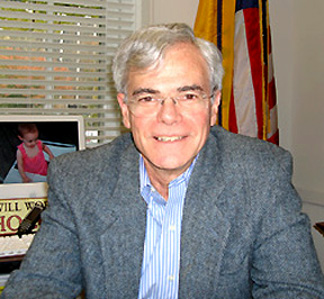GOING
PUBLIC WITH NIH RESEARCH
 |
| All papers reporting research supported by NIH funds with acceptance dates of April 7, 2008, or later must be submitted to PubMed Central upon acceptance for publication. PubMed Central will post these articles within 12 months of the print publication date. Anyone supported through an NIH grant or contract, receiving an NIH salary, or working at NIH using NIH funds to support his or her research is covered by this new legal requirement . . . . |
To guarantee public access to NIH-supported research, Congress included language in its 2008 NIH appropriations legislation that mandates the deposit of published NIH-supported peer-reviewed articles into the public database known as PubMed Central, which is maintained by the National Library of Medicine.
This legal requirement follows several years of discussion about the best way to accomplish the goal of making NIH-funded research available without charge to anyone who wants to read peer-reviewed research papers and reviews, the most visible product of the research of biomedical researchers.
All papers reporting research supported by NIH funds with acceptance dates of April 7, 2008, or later must be submitted to PubMed Central upon acceptance for publication. PubMed Central will post these articles within 12 months of the print publication date.
Anyone supported through an NIH grant or contract, receiving an NIH salary, or working at NIH using NIH funds to support his or her research is covered by this new legal requirement, even if co-authors are not NIH-supported.
For intramural scientists, many of whom have been submitting papers to PubMedCentral voluntarily, this requirement involves minimal additional burden. We have already told intramural scientists how to access the NLM PubMed Central site—
—and over the next month or so will provide you with additional detailed information in a user-friendly format.
The Copyright Issue
For intramural scientists, copyright should not be a major issue because government employees may not claim U.S. copyright in their publications and hence cannot transfer copyright.
Many journals will submit papers to PubMed Central for you—for an overview, see
<http://publicaccess.nih.gov>.
However, if they do not, the specific journal format of the article (that is, the copyedited form of the article in its specific journal format) may be protected. Therefore, without specific journal permission to use the published form of the article, it should be the accepted version submitted by the authors to the journal that would also be submitted to PubMed Central.
Does this result in the literature containing two versions of the same paper? In theory, it might, if the copyedited version is very different; but the author is free to send scientific changes to PubMed Central to harmonize the two versions. Ideally, journal publishers would provide PubMed Central with the published article, thereby ensuring there is only a single version.
A Win-Win Policy
The advantages of this new requirement to the public are obvious. As already noted, for NIH scientists, enabling public access to our scientific papers will broaden the exposure of our research, with a resulting increase in citations and impact on the scientific literature.
PubMed Central links to other data resources referred to in the papers, resulting in a richer understanding of scientific content..
Because Congress has mandated this new requirement, we will be held accountable for any failure to fully comply. The NIH intramural program can be expected to be under special scrutiny with respect to this new mandate. Thus, I seek your enthusiastic embrace of this new outlet for our scientific work and will be developing with the scientific directors a system to be sure that all papers are submitted as specified. Initially, the system will involve frequent reminders as we become familiar with the requirements.
Any constructive ideas about how best to achieve full compliance will be appreciated.
—Michael
Gottesman
Deputy Director for Intramural Research